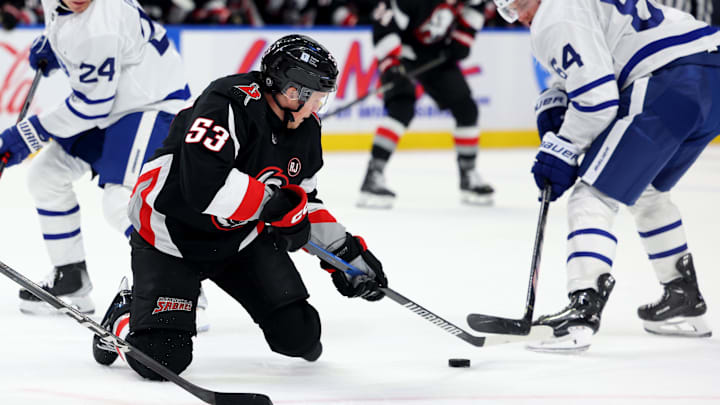Trading Jeff Skinner would also open up more potential long-term deals
Even if a trade occurred and the Sabres retained 50 percent, they’re still saving substantial money. So even if they went the cost-effective route in free agency and easily brought on a forward or two with their current cap space, they could also use those cap savings from a hypothetical Skinner trade to reinvest in current talent.
One of the mysteries here would be how to extend the likes of JJ Peterka, Jack Quinn, and ultimately Zach Benson and Alex Tuch, four more players who should comprise the core. There are several routes the Sabres could go with regarding all of the above besides Tuch, who will be an unrestricted free agent and would need a long-term deal by the end of 2025-26 if they wanted to keep him around, but trading Skinner this summer would nonetheless help.
Quinn and Peterka will be looking for new and more lucrative contracts, even if Kevyn Adams could theoretically bring them back on bridge deals for the moment. Ditto for Benson, who will also be eligible following the 2025-26 season, while Quinn and Peterka must sign following 2024-25.
Overall, there are arguments to be made for and against trading Skinner, and tomorrow, we’ll talk about why this hypothetical trade wouldn’t be such a good idea.
(Statistics provided by Hockey-Reference)
